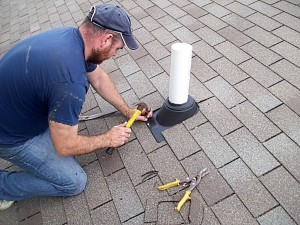What is radon gas? Where does it come from? How do you test for it?
These are all questions that you’ll find answered here at Radon Resources. We have a ton of useful guides on our site that will help you get familiar with the silent killer – radon gas. However, a lot of that information is spaced throughout several pages, blog posts and lists.
We thought it would be a great idea to compile a more comprehensive FAQ, that addresses some of the most common questions about radon that people have.
If you have a couple specific questions, chances are we’ll cover them here.
8 Frequently Asked Questions About Radon Gas
1. Is Radon Dangerous?
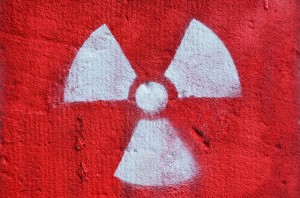 According to the US EPA, there are more than 21,000 deaths due to radon-induced lung cancer every year.
According to the US EPA, there are more than 21,000 deaths due to radon-induced lung cancer every year.
Worse yet, radon has been designated a known carcinogen by the National Toxicology Program (NTP) which comprises several government agencies including the National Institutes of Health (NIH), the Centers for Disease Control and Prevention (CDC), and the Food and Drug Administration (FDA).
It is the second leading cause of lung cancer in the United States, and the leading cause in non-smokers.
Several studies have linked long-term exposure to radon gas to other non-cancerous respiratory diseases such as pulmonary fibrosis.
2. What Is Radon?
Radon is a naturally occurring radioactive gas. It is odorless, colorless and tasteless which is just another way of saying it’s invisible and virtually undetectable.
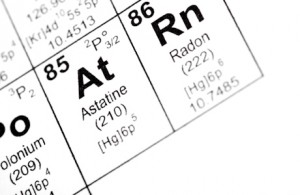 It is formed when several natural elements under-go radioactive decay. These elements – such as Uranium – are commonly found in the soil and rock beneath our feet, under the surface.
It is formed when several natural elements under-go radioactive decay. These elements – such as Uranium – are commonly found in the soil and rock beneath our feet, under the surface.
The gas seeps up from the surface and collects in concentrated amounts, often inside homes and buildings. It can enter through cracks in the foundation walls and flooring. It can also dissolve in water beneath the ground’s surface.
When radon undergoes radioactive decay, it releases ionizing radiation particles often referred to as alpha particles. Other decay products are also generated — called progeny or daughters. The progeny are small and are not in the form of gas, so they attach to dust and other particles of comparable size. The contaminated particles can be transported through the air, often inhaled by those exposed. These particles can attach to the walls and lining of the lungs, where they continue to experience radioactive decay.
When radon collects in concentrated amounts it is measured in picocuries per liter ( pCi/L) in the US, or becquerels (Bq) internationally. The only way to detect its presence is to test for it specifically. Even when radon is present inside a residence or structure at dangerously high levels, no one would be the wiser without conducting the appropriate test.
pCi/l or pico curies per liter, is the domestic method of measuring radon levels. A pico curie is 0.000,000,000,001 (one-trillionth) of a Curie, the international measurement unit of radioactivity.
To translate: one pCi/l means, in one liter of air there are 2.2 radioactive disintegrations every minute. At 4 pCi/l there are approximately 12,672 radioactive disintegrations in one liter of air, during a full 24-hour period.
Bq or becquerels is the international method of measuring radiation.
Countries like Canada and the UK use this form of measurement for the deadly gas. In those countries, the action level ranges from 150 Bq m3 — slightly less than 4 pCi/l — to no set limit. For instance, in Canada the suggested action level is 200 Bq m3. Other countries don’t even have a recommended action level designated.
3. What Is Considered a Safe Level of Radon?
Technically, there is no “safe” level of radon. However, a certain amount of radon will always exist in the open air — even outside.
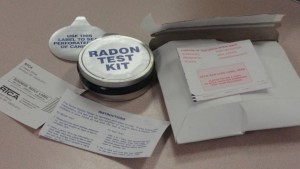 Depending on your geographic location, the radon levels of the air outside your home may be as high as 0.75 pCi/L. The national average of outside radon levels is 0.4 pCi/L.
Depending on your geographic location, the radon levels of the air outside your home may be as high as 0.75 pCi/L. The national average of outside radon levels is 0.4 pCi/L.
The United States Environmental Protection Agency (EPA) has set the “action level” – which is the limit at which you need to take action to remove the radon from your home, school, or work place – at 4 pCi/l. In other words, if a test is conducted and the radon levels exceed that amount you absolutely need to install a mitigation system.
However, we recommend exploring mitigation options if the radon levels in your home exceed 2.0 pCi/L.
4. What Do You Do When You Discover Elevated Radon Levels In Your Home?
If you perform a single test and find high levels of radon, you’ll want to conduct a second one to be sure. We recommend conducting a short term test first and then moving on to a long term test; only after you discover elevated levels during the first one. A long term test will provide a more accurate average reading of the radon levels in your home.
Once you’re sure there are elevated levels of radon gas in your home it’s time to hire an experienced professional. They will install a radon mitigation system. This sounds more complicated than it is.
If deemed necessary, a certified professional will remove the radon gas from your home by installing a simple ventilation system at the lowest livable level.
The cost of hiring a contractor can range from about $1,000 to $2,500 depending on the size of your residence and what services they provide. You can purchase a DIY radon testing kit at your local hardware store or online, for about $15 to $30.
5. Where are the Best Places to Buy Radon Testing Kits?
While we do not endorse — and are not affiliated with — any testing equipment providers we have compiled a list of the best places to purchase DIY kits. If you’d much rather hire a professional to do the testing for you, take a look at our National Radon Directory instead.
6. How Do You Test Your Home for Radon Gas?
Most DIY testing kits come with thorough instructions, however we do have a guide on testing here.
7. How Likely Is It That I Will Get Cancer from Radon Gas Exposure?
Radon has been linked to 21,000 deaths a year and it’s the second leading cause of lung cancer. That doesn’t necessarily mean exposure is going to give you health problems right away. Most studies have shown that long-term exposure is the real danger.
If you’d like to see studies that explore the dangers of radon along with a list of government agencies that endorse the fact that it’s a health hazard, see this guide.
8. Where Is Radon Found the Most?
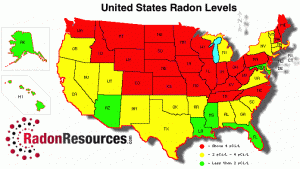 Believe it or not, Radon can be found anywhere in the world. In the US, that includes all 50 states.
Believe it or not, Radon can be found anywhere in the world. In the US, that includes all 50 states.
That said, it is more prevalent in certain areas of the country depending on the geography and composition of the land. The map shown will provide you an idea of where radon gas is more commonly found.
Where Can You Find More Information for Questions About Radon Gas?
We’re not the only place that answer questions about radon gas and its associated dangers. There are lots of agencies and websites where you can read more.


